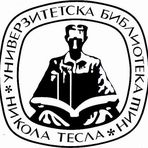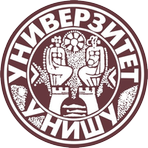Title
Književno delo Dušana Radovića u svetlu teorije transmedijalnosti
Creator
Petković, Velibor 1963-
Copyright date
2020
Object Links
Select license
Autorstvo-Nekomercijalno-Bez prerade 3.0 Srbija (CC BY-NC-ND 3.0)
License description
Dozvoljavate samo preuzimanje i distribuciju dela, ako/dok se pravilno naznačava ime autora, bez ikakvih promena dela i bez prava komercijalnog korišćenja dela. Ova licenca je najstroža CC licenca. Osnovni opis Licence: http://creativecommons.org/licenses/by-nc-nd/3.0/rs/deed.sr_LATN. Sadržaj ugovora u celini: http://creativecommons.org/licenses/by-nc-nd/3.0/rs/legalcode.sr-Latn
Language
Serbian
Cobiss-ID
Theses Type
Doktorska disertacija
description
Datum odbrane: 23.06.2021.
Other responsibilities
mentor
Jovanović, Jelena V. 1974-
predsednik komisije
Stojanović, Dobrivoje
mentor
Božić, Snežana
Academic Expertise
Društveno-humanističke nauke
University
Univerzitet u Nišu
Faculty
Filozofski fakultet
Group
Departman za srpsku i komparativnu književnost
Alternative title
Literary work of Dušan Radović in the light of the theory of transmediality
Publisher
[V. V. Petković]
Format
375 listova
description
Biografija autora: list 375;
Bibliografija: listovi 353-374.
description
Serbian and comparative literature
Abstract (en)
The subject of research of the doctoral thesis The literary work
of Dušan Radović in the light of the theory of transmediality are texts
written for the media or subsequently transposed from literature into
electronic media - radio and television. The corpus of the study
consists of a television series for children Na slovo, na slovo, the
writer's theoretical considerations of this medium and TV reviews of
program content, texts of the show Beograde, dobro jutro and radio
dramas with reference to literary texts in intermedial and transmedial
relations.
The basic methodological orientation is based on postclassical,
cognitive narratological studies, on the intertextual and intermedial
approach as well as on transmediality that contributes to the
metareferential networking of different media and the entire
contemporary culture. A significant role in this approach is played by
Roger Fidler's understanding of mediamorphosis as the evolution of
information and communication technologies which implies the
possibility of abolishing the boundaries between reality and virtuality.
The theoretical part presents the development of narratology,
from structuralism and attempts to establish a narrative grammar,
through shifting the focus from narrative to narrativity, to the
metareferential turn and hypermediation of culture. In this context, by
the methodology of Marshall McLuhan's theory of the primacy of the
media form for influencing the audience, the author analyzes the
power of the speech narrative of radio, as well as television mediation
of the world with image and sound through the history of their
technological development.
The research work on the texts of Dušan Radović, the first
Serbian writer who was also a professional author in the electronic
media, showed that his short narratives from the radio published in
books express more pronounced satire as the main feature of the
aphorism. The change of the communicative channel through which
the narrative reaches the recipient changes the semiotic system, and
thus the cognitive procedure and the way we process the narrative.
The story mediated by the television image influences the
movement of fictional entities through the media to an even greater
extent, transmedialy varying the meanings and enriching the
impressions of the recipient. The awareness of being conditioned by
the media context directed Radović towards pragmatic speech in
which he addressed the audience directly, which explains the
openness and dynamism of his texts through the metaleptic abolition
of the boundaries between fiction and reality. The description present
in the texts for the radio is missing in the script of the TV series
episodes, since it is replaced by the picture. The dialogical nature of
human communication and the drama of events enable the
transposition of narratives from one medium to another without losing
the essential properties of the poetic and ethical peculiarities of
Radović's work.
The emergence of new media in the era of the Internet, that
has led to the convergence of the old and the advent of a humancomputer
interface, requires a new language in which all rhetorical
figures are reduced to metonymy.
The hypertext of the world wide web leads the reader from
one text to another ad infinitum, believes Lev Manovich, and the
counterpart to metonymy in this sphere is metareference as a key
concept of transmedial narratology. Radović's narratives, based on
word play, the unusualness of reality and the creation of miracles,
connect fantasy and reality with a two-dimensional character, which
makes them ideal for the endless virtual space of the transmedial
future.
Authors Key words
književno delo, Dušan Radović, mediji, transmedijalnost,
narativ, metareferenca
Authors Key words
literary work, Dušan Radović, media, transmediality, narrative,
metareference
Classification
821.163.41.09 Radović D.
82.01
Subject
H 100
Type
Tekst
Abstract (en)
The subject of research of the doctoral thesis The literary work
of Dušan Radović in the light of the theory of transmediality are texts
written for the media or subsequently transposed from literature into
electronic media - radio and television. The corpus of the study
consists of a television series for children Na slovo, na slovo, the
writer's theoretical considerations of this medium and TV reviews of
program content, texts of the show Beograde, dobro jutro and radio
dramas with reference to literary texts in intermedial and transmedial
relations.
The basic methodological orientation is based on postclassical,
cognitive narratological studies, on the intertextual and intermedial
approach as well as on transmediality that contributes to the
metareferential networking of different media and the entire
contemporary culture. A significant role in this approach is played by
Roger Fidler's understanding of mediamorphosis as the evolution of
information and communication technologies which implies the
possibility of abolishing the boundaries between reality and virtuality.
The theoretical part presents the development of narratology,
from structuralism and attempts to establish a narrative grammar,
through shifting the focus from narrative to narrativity, to the
metareferential turn and hypermediation of culture. In this context, by
the methodology of Marshall McLuhan's theory of the primacy of the
media form for influencing the audience, the author analyzes the
power of the speech narrative of radio, as well as television mediation
of the world with image and sound through the history of their
technological development.
The research work on the texts of Dušan Radović, the first
Serbian writer who was also a professional author in the electronic
media, showed that his short narratives from the radio published in
books express more pronounced satire as the main feature of the
aphorism. The change of the communicative channel through which
the narrative reaches the recipient changes the semiotic system, and
thus the cognitive procedure and the way we process the narrative.
The story mediated by the television image influences the
movement of fictional entities through the media to an even greater
extent, transmedialy varying the meanings and enriching the
impressions of the recipient. The awareness of being conditioned by
the media context directed Radović towards pragmatic speech in
which he addressed the audience directly, which explains the
openness and dynamism of his texts through the metaleptic abolition
of the boundaries between fiction and reality. The description present
in the texts for the radio is missing in the script of the TV series
episodes, since it is replaced by the picture. The dialogical nature of
human communication and the drama of events enable the
transposition of narratives from one medium to another without losing
the essential properties of the poetic and ethical peculiarities of
Radović's work.
The emergence of new media in the era of the Internet, that
has led to the convergence of the old and the advent of a humancomputer
interface, requires a new language in which all rhetorical
figures are reduced to metonymy.
The hypertext of the world wide web leads the reader from
one text to another ad infinitum, believes Lev Manovich, and the
counterpart to metonymy in this sphere is metareference as a key
concept of transmedial narratology. Radović's narratives, based on
word play, the unusualness of reality and the creation of miracles,
connect fantasy and reality with a two-dimensional character, which
makes them ideal for the endless virtual space of the transmedial
future.
“Data exchange” service offers individual users metadata transfer in several different formats. Citation formats are offered for transfers in texts as for the transfer into internet pages. Citation formats include permanent links that guarantee access to cited sources. For use are commonly structured metadata schemes : Dublin Core xml and ETUB-MS xml, local adaptation of international ETD-MS scheme intended for use in academic documents.


